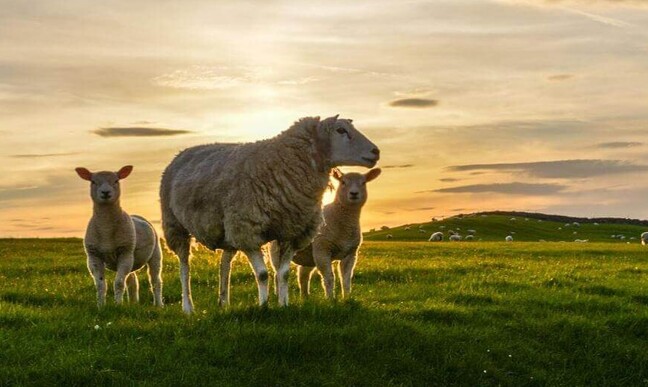Good strong healthy lambs – it's what we are striving for when lambing comes around.
In the last few years, most farmers have experienced some turbulent weather during the lambing season – for many it was extreme!
The 2020 snowstorm that hit our farm right in the middle of lambing was horrendous. But the stock were amazing. We saw ewes sensibly seeking shelter, ewes desperately showing us their mothering ability, lambs doing their best to bleat in the hope that mum would hear and even a few lucky ewe/lamb families tucked up warmly in a snow cave just needing a hand to get out to grass.
The work was hard, tiring, disheartening and just plain gut-wrenching. But it did remind me of the passion that our team at VetSouth has. To work with farmers to make the ewe and lamb combination as robust as possible in the lead up to lambing. It is in these situations that you can feel proud that you have done your best by your stock – even if the outcome is not great, you did all that you could.
The following are common factors that affect lamb survival – any year;
- Ewe body condition score
- Lamb birth weight
- Disease in lambs
- Trace elements
- Udder health
1. Ewe Body Condition Score
Ewes in good condition (3-3.5) are the most efficient producers on your farm. She is able to:
- Produce a placenta that is able to produce a good size lamb that has adequate oxygen, growth and fat/energy reserves.
- Have the energy to get up after the birth and get the lamb going.
- Produce high quality colostrum of adequate volume which leads to good milk production.
2. Lamb Birth Weight
Lamb survival is optimised when their birth weight is 4.2-7.4kg. When we do lamb post mortems we see many lambs below this weight which increases their chance of death around the lambing period. The key to improving this is the nutrition of the ewe in the first 60-90 days when she is producing the placenta (watch for abrupt changes of feed during this time which can have a negative effect on the placenta) and maintaining ewe condition through to lambing.
3. Disease of the Lamb
Preventing Campylobacter, Toxoplasmosis, Salmonella and Hairy Shaker has a positive impact on lamb survival. Most of these diseases not only cause abortion, but also cause lambs to be born weak – making them slow to rise and suckle, or follow their mum and consequently die from mismother/starvation/exposure.
Prevention is through stock management and vaccinations. Congratulations to those who have taken steps pre-tup to minimise disease risk. This really pays.
4. Trace Elements
We manage lamb trace elements through the ewe during gestation. The big players here are selenium and iodine. It's super important to have sufficient levels in the last third of pregnancy so that the lambs are born with muscles (heart and body) that work well (selenium), and also a fully functional heat producing system (iodine required for thyroid function). If you have ever seen a lump in the front of a lamb's neck this is a clear indication of iodine deficiency – it's pretty bad if you see this. But subclinical (no visible lump) iodine deficiency is a common contributor to low lamb survival, especially when we feed high levels of brassicas during the winter.
5. Udder Health
Any udder damage – trauma or disease – that has occurred at last lambing or any time between lambings can cause a blocked path for milk. Lambs are then unable to get a feed. Uddering ewes is an important management practice that can be performed 4 weeks after weaning right through to scanning. Hopefully, you are able to get this done and prevent hungry lambs.
Do you know why some of your lambs survive while others don’t?
Each year we do lamb survival post mortems to help work out the answer to this question. There are a number of ways to do it, but what most farmers find easiest is to have us out one or two days during lambing to do lamb post mortems. Ideally, we would do 30-40 lambs to get information which leads us to an action plan for the future season.
We realise that much of this will not be news to you. Our farmers are experts at what they do. However, we do often see that tweaks can result in much better returns to farmers and a higher level of satisfaction. We have a big team who can contribute to your success – please let us know if we can help.
- Donna Hamilton

